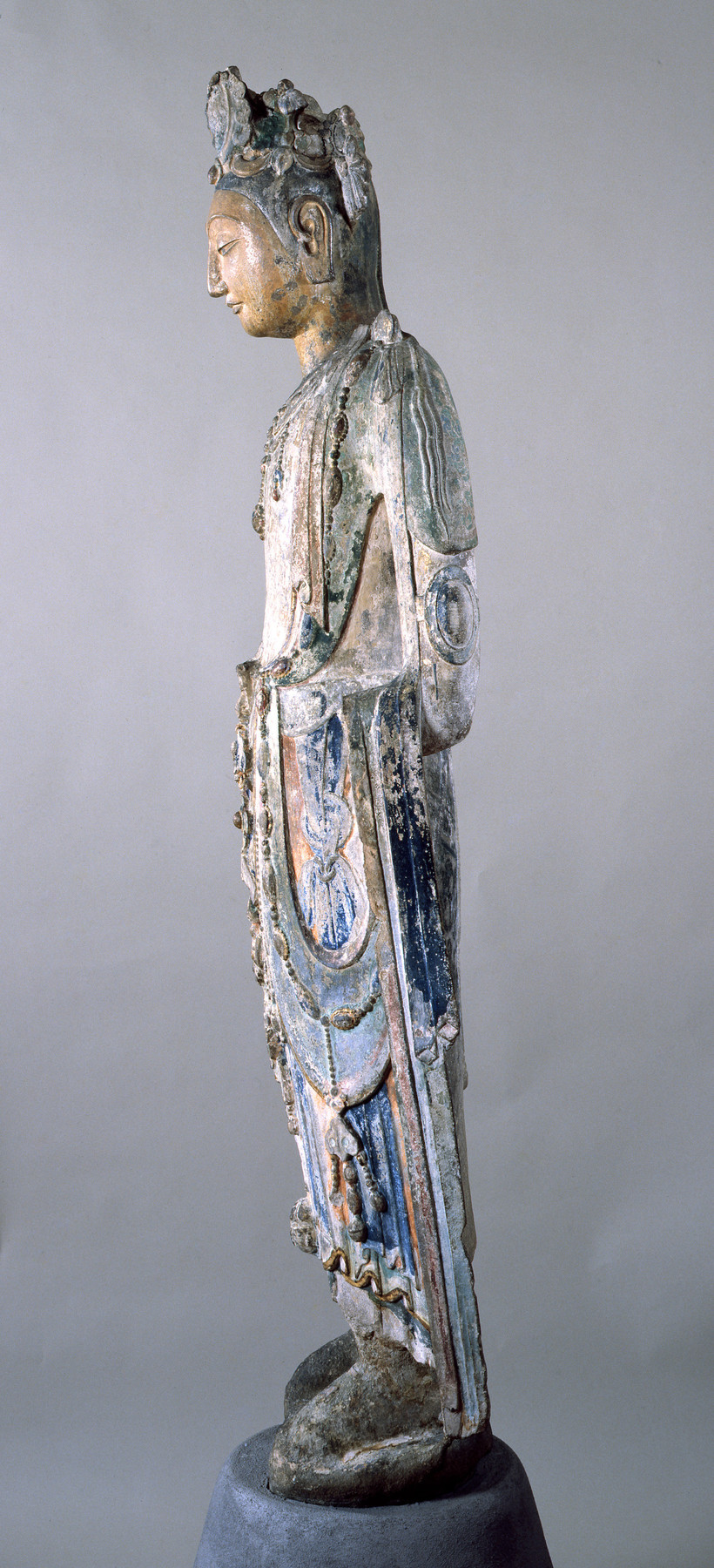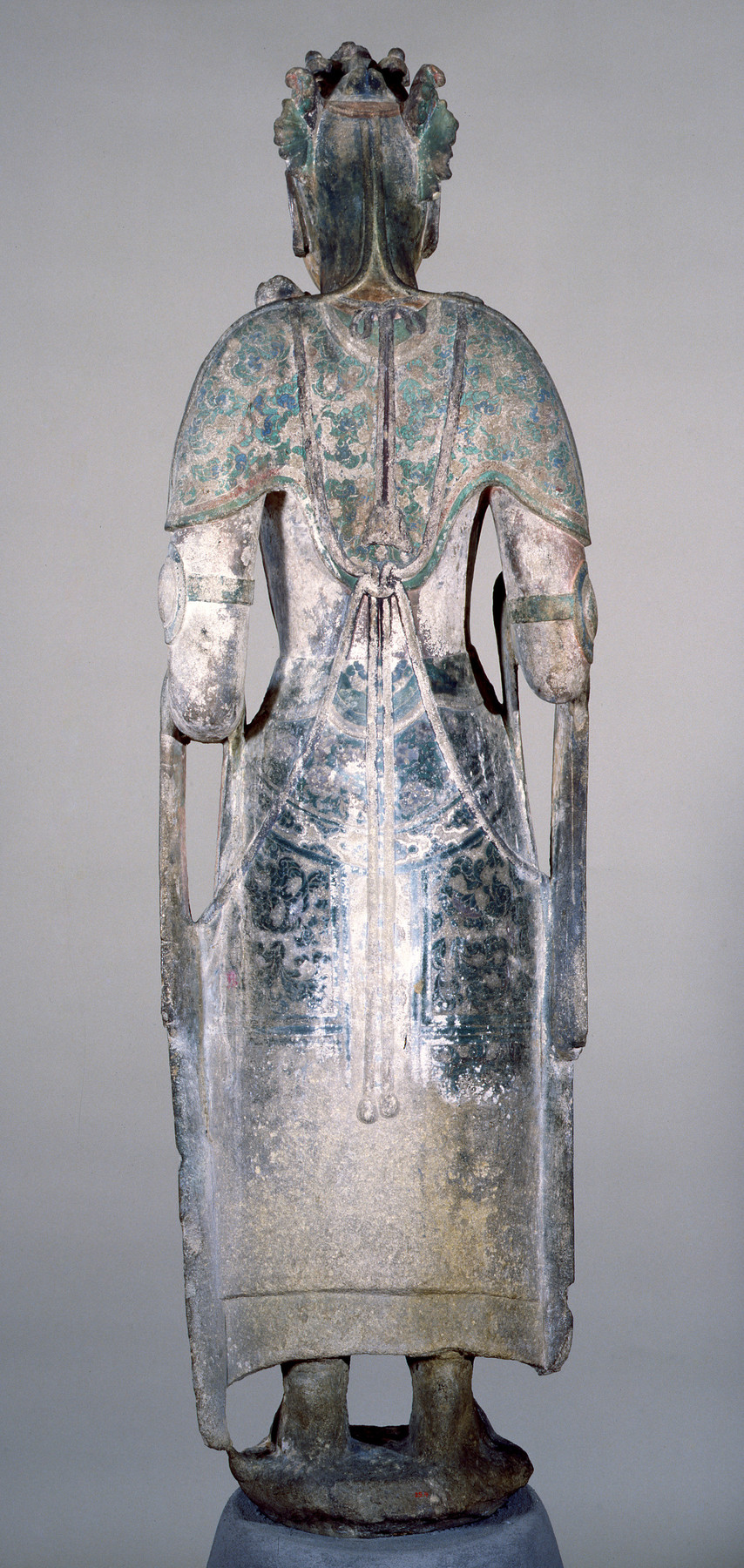Standing Bodhisattva
(China )
Although the identifying symbols are lost, this is probably the Buddhist bodhisattva Avalokiteshvara. A bodhisattva is a being who is on the path to becoming a buddha yet vows to first liberate all creatures in the universe from pain and suffering before achieving their own enlightenment. Long a focus of devotion in Asia, Avalokiteshvara responds to the calls of those in peril.
Here, the bodhisattva is represented dressed and adorned as Indian royalty would be but on a columnar erect body typically seen in Chinese figural art of the time. Such a melding of artistic traditions within this sculpture references the centuries-long journey of the spread of Buddhism, from India in the 1st century, crossing the Himalayas and arriving in China by the 3rd century.
Provenance
Provenance (from the French provenir, 'to come from/forth') is the chronology of the ownership, custody, or location of a historical object. Learn more about provenance at the Walters.
Yamanaka & Co., New York; Henry Walters, Baltimore [date of acquisition unknown] by purchase; Walters Art Museum, 1931, by bequest.
Conservation
| Date | Description | Narrative |
|---|---|---|
| 7/14/1971 | Treatment | cleaned |
Geographies
China, Shanxi [Shan-hsi] (Place of Origin)
Measurements
Overall with base H: 105 1/4 × W: 28 1/4 × D: 32 in. (267.34 × 71.76 × 81.28 cm); Object to base only, H: 84 in. (213.36 cm)
Credit Line
Acquired by Henry Walters
Accession Number
In libraries, galleries, museums, and archives, an accession number is a unique identifier assigned to each object in the collection.
In libraries, galleries, museums, and archives, an accession number is a unique identifier assigned to each object in the collection.
25.4






